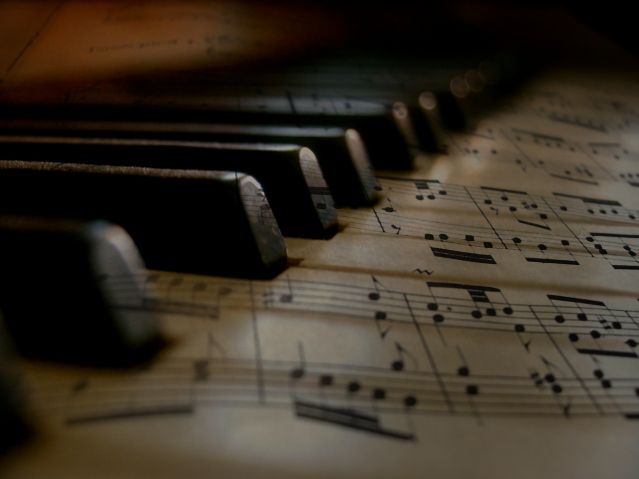
Cognition
When Music Becomes Language
Neuroimaging Reveals How the Jazz Masters See Music Differently
Posted July 28, 2015

If you’ve ever taken a music class, you’ve probably encountered the old cliché that music is a “universal language.” The author of the phrase, Henry Wadsworth Longfellow,1 perhaps meant that music is a mode of emotional expression that anyone can enjoy. He probably didn’t intend to imply, in the literal sense, that music is an actual language. Nevertheless, research in neuroscience indicates that, for a select group of people, the brain treats music and language in the same way.
When you understand a language, whether written or spoken, you don’t simply hear sounds emanating from the speaker’s mouth or shapes displayed on a page. Words are vehicles of meaning. When they arrive in the brain, they are instantly rendered as linguistic symbols and linked to the concepts they connote.
In contrast, to someone who doesn’t understand the language, it might seem like a set of meaningless sounds or pictures. For example, take a look at this word: 香蕉. For those of us who don’t know Chinese, that might look like a set of haphazard shapes. Perhaps it’s an abstract portrayal of a barstool, on top of a file drawer, chasing a frightened shopping cart. The images aren’t meaningful. But for the millions of people who understand the language, those symbols bring the following image to mind:

The same thing would happen to any English speaker who hears or reads the word “banana.”
As we learn a new word, we slowly transition from merely perceiving a set of symbols to experiencing meaning. In adults, speech production is controlled by Broca’s area, in the frontal lobe. Language comprehension is accomplished by Wernicke’s area, located in the temporal lobe. Those are the areas of the brain that light up as we read or have conversations.
Infants, on the other hand, are still developing their language skills. Before they understand what a word means, it’s just a sound to them. The word activates the auditory areas of their brains, but not Broca’s or Wernicke’s area. Once children are fluent in language, the sound of a word will suddenly ignite the language circuitry.2
Like spoken words, music is comprised of strings of sound. The question is, how does the brain treat it? Is it just a set of sounds, or is it language?
For the average music listener, music only triggers the auditory cortex.3 It’s just sound. The brain activity resembles that which we might see in babies hearing words they don’t understand. But what about brain of someone who is musically fluent?
Consider the way master jazz musicians can improvise a piece at will, often taking turns playing riffs on their respective instruments. The drummer plays a solo, followed by the trumpet player. The pianist plays a few bars and the saxophone player answers. At times, the players appear to be communicating with one another. In what’s called “trading fours,” musicians go back and forth exchanging solo tunes, as if part of a conversation. The great jazz saxophonist Stan Getz said of jazz:
It’s like a language. You learn the alphabet, which are the scales. You learn sentences, which are the chords. And then you talk extemporaneously with the horn. It’s a wonderful thing to speak extemporaneously, which is something I’ve never gotten the hang of. But musically I love to talk just off the top of my head. And that’s what jazz music is all about.4
When done with multiple performers, jazz becomes a dialogue.
In a study of musical improvisation, neuroscientists recruited thirteen classically trained pianists to improvise tunes while hooked up to a functional MRI (fMRI) machine, which measures brain activation in real time. As the pianists’ fingers danced across the keys, fashioning melodies in their minds, the fMRI recorded their brain activity. What the researchers saw was shocking: the fMRI signal highlighted Broca’s area, the region of the brain in charge of speech production.5 Evidently, the brain treated the performances as if the players were speaking aloud.
A pianist improvising alone is analogous to a person speaking to himself. What’s left out is dialogue. After all, the purpose of language is to talk to each other, not just to think up phrases in our minds. A recent study used fMRI to see how the brain treats music as part of an improvisational dialogue.6 Two at a time, jazz musicians played improv by alternating solos while the fMRI tracked the brain regions that were at work. For comparison, each participant also played a simple musical scale.
Compared with simply playing scales, the one-on-one improvisation mobilized both language centers of the brain: Broca’s (speech expression) and Wernicke’s area (speech comprehension). In a conversation you need not only to speak your mind, but also understand what the other person is saying.
With the help of neuroscience, the masters of jazz have demonstrated that when we attain the highest levels of proficiency in something, we can actually change the underlying brain circuitry that gives rise to our art. If nothing else, it’s motivation to practice.
REFERENCES
[1] Longfellow, HW. Ancient Spanish Ballads, Historical and Romantic. Translated, with notes, by J. G. Lockhart, 8vo. New York: Wiley and Putnam, 1841.
[2] Travis, KE et al. “Spatiotemporal neural dynamics of word understanding in 12- to 18-month-old-infants.” Cerebral Cortex 21, 8 (2011):1832-9.
[3] Toiviainen, P et al. “Capturing the musical brain with Lasso: Dynamic decoding of musical features from fMRI data.” Neuroimage 88C (2013): 170-180.
[4] Maggin, DL. Stan Getz: A Life in Jazz. New York: William Morrow, 1996, p. 21.
[5] Berkowitz AL, Ansari D. Generation of novel motor sequences: the neural correlates of musical improvisation. Neuroimage 41, 2 (2008): 535-43.
[6] Donnay GF, et al. “Neural substrates of interactive musical improvisation: an FMRI study of 'trading fours' in jazz.” PLoS One 9, 2 (2014): e88665.



